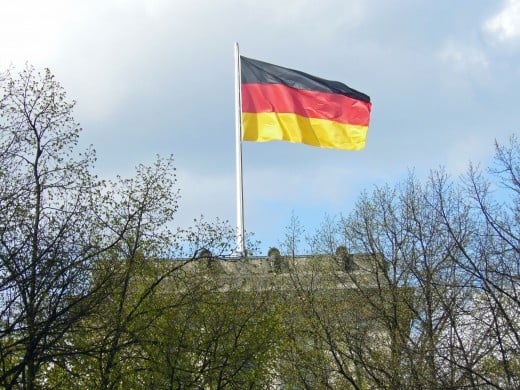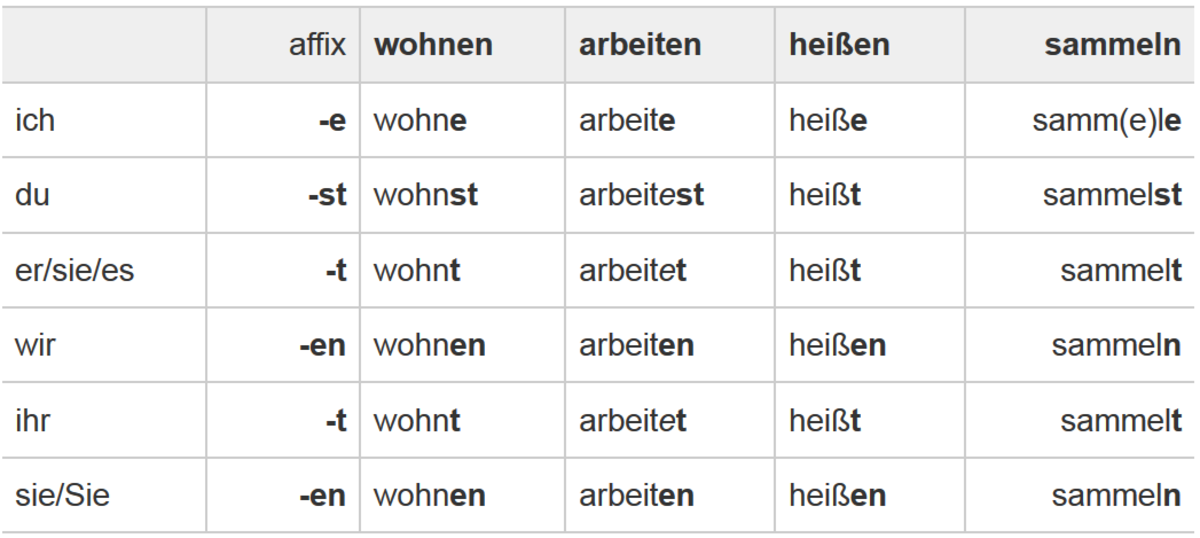The German Language Series: Part VI- Conjugating "haben" in the Present, the Family Tree, and Possessive Adjectives

The Present Conjugation of Haben: to have
- ich habe
- du hast
- er/sie/ es hat
- wir haben
- ihr habt
- sie haben
- Sie haben
The Family Tree
Various forms of "haben" are used in order to relay family associations (i.e. I have a sister and two brothers). For this reason, the vocabulary included in this lesson pertains to the family tree (Ein Familienstammbaum).
The additional letters needed to make the word plural are included in parentheses (). Remember, any plural noun is preceded by the definite article die, which additionally serves as the feminine article .
- die Vaterlicherseits/ Mütterlicherseits Großeltern - Paternal/Maternal Grandparents
- der Großvater (Großväter)- Grandfather
- die Großmutter (Großmütter) - Grandmother
- der Opa (s) - Grandfather (informal)
- die Oma (s) - Grandmother (informal)
- dieTante (n) -Aunt
- der Onkel - Uncle
- die Kusine (n) - Cousin (female)
- der Vetter (n)-Cousin (male)
- der Enkel -Grandson
- die Enkelin (nen)-Granddaughter
- der Neffe (n) - Nephew
- die Nichte (n) - Niece
- der Schwager (Schwäger) -Brother-in-law
- die Schwägerin (Schwägerinen) - Sister-in-law
- die Mutter (Mütter) - Mother
- der Vater (Väter) -Father
- die Frau (en) - Wife
- der Mann (Männer) -Husband
- die Geschwister - Siblings
- die Schwester (n) -Sister
- der Bruder (Brüder) - Brother
- die Tochter (Töchter) - Daughter
- der Sohn (Söhne) - Son
To indicate a relationship of a step- or half- relative, precede the noun with either Stief- or Halb-, respectively (e.g. Stiefschwester; Halbbruder).
To indicate great-, utilize the prefix Ur- (e.g. Urgroßmutter).
Learning Numbers to Specify Relationships
Below is a brief vocabulary section on the numbers 1-20 in order to indicate relationships.
The Numbers 1-20
- eins
- zwei
- drei
- vier
- fünf
- sechs
- sieben
- acht
- neun
- zehn
- elf
- zwölf
- dreizehn
- vierzehn
- fünfzehn
- sechzehn
- siebzehn
- achtzehn
- neunzehn
- zwanzig
When speaking of members of the family, the basic format is as follows:
- Ich habe eine Kusine. (I have a/one cousin.)
To say "none", simply interject keine instead of a number.
- Ich habe keine Brüder. (I have no brothers.)
Possessive Adjectives
Possessive Adjectives are used in order to indicate belonging or ownership. In the familial context, it will be used to say "my mother", or "her uncle". Each adjective correlates with a personal pronoun.
Personal Pronoun and corresponding Possessive Adjective (Singular)
- ich - mein (my)
- du - dein (your) (informal)
- Sie - Ihr (your) (formal)
- er - sein (his or its)
- sie - ihr (her or its)
- es - sein (its)
Personal Pronoun and corresponding Possessive Adjective (Plural)
- wir - unser (our)
- ihr - euer (your) (informal)
- Sie - Ihr (your) (formal)
- sie - ihr (their)
Remember, everything needs to correspond to gender, case, and number,
The masculine and neuter form of each possessive adjective used in the nominative case is as written above.
- Das ist mein Onkel. (That is my uncle.)
- Sehen Sie unser Neffe? (Do you see our nephew?)
The feminine form requires the addition of an -e at the end of each possessive adjective.
- Hier ist meine Mutter. (Here is my mother)
- Wo ist eure Schwester? (Where is your sister?)



